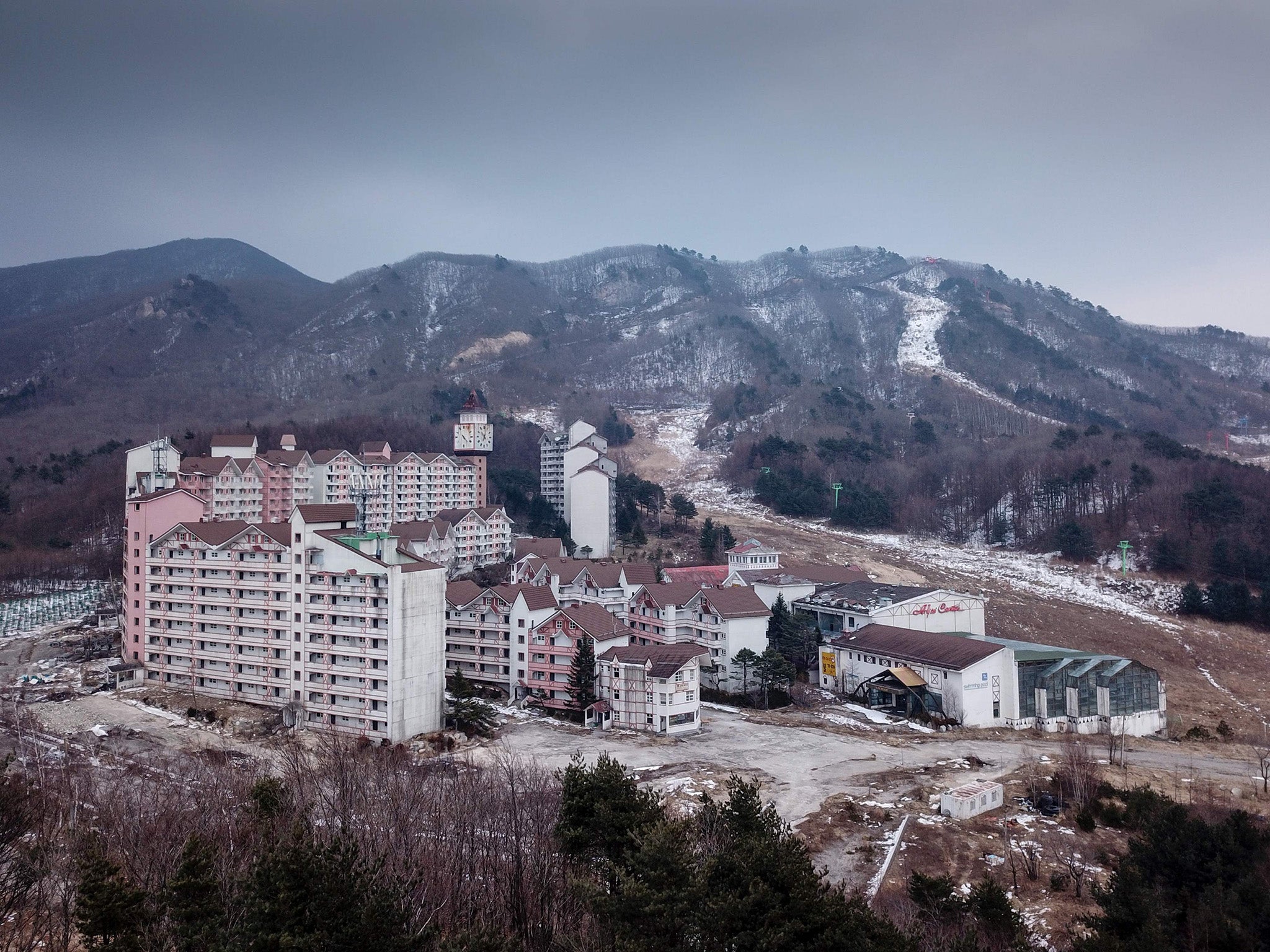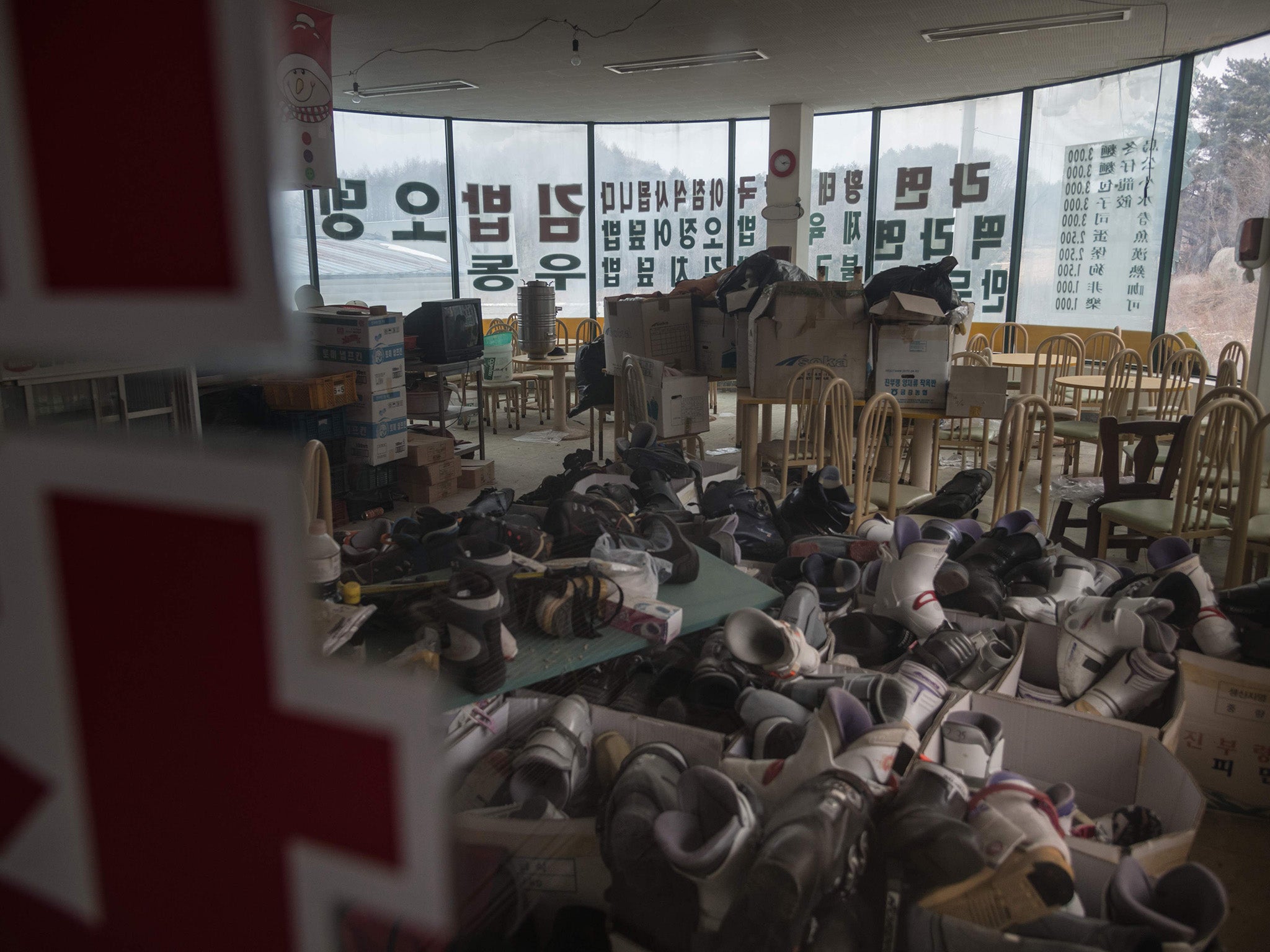Winter Olympics 2018: Is abandoned South Korean ski resort a warning to Pyeongchang?
Photos of the Alps Ski Resort show a desolated wasteland

Your support helps us to tell the story
From reproductive rights to climate change to Big Tech, The Independent is on the ground when the story is developing. Whether it's investigating the financials of Elon Musk's pro-Trump PAC or producing our latest documentary, 'The A Word', which shines a light on the American women fighting for reproductive rights, we know how important it is to parse out the facts from the messaging.
At such a critical moment in US history, we need reporters on the ground. Your donation allows us to keep sending journalists to speak to both sides of the story.
The Independent is trusted by Americans across the entire political spectrum. And unlike many other quality news outlets, we choose not to lock Americans out of our reporting and analysis with paywalls. We believe quality journalism should be available to everyone, paid for by those who can afford it.
Your support makes all the difference.Haunting pictures of a deserted ski resort an hour’s drive from Pyeongchang show a glimpse of the potential future for the South Korean city’s costly new facilities, built in time for hosting the upcoming Winter Olympics.
The Alps Ski Resort in Heul-ri opened in the 1980s and shut up shop in 2006, despite the area having the heaviest natural snowfall in the country.
The small settlement of 250 or so inhabitants was left struggling in the wake of the closure of what had been a significant income generator.
“It’s completely in ruins,” Oh Geum-Sik, who formerly ran a ski rental shop, told Channel News Asia.
“All the businesses are practically dead.”
Photos show Eighties-era ski boots gathering dust on a counter, musty hotel corridors and empty auditoriums with moulding chairs.
They are a timely reminder of what could happen to the new infrastructure built in Pyeongchang after the Winter Games, which take place from 9 to 25 February 2018, are over.
South Korea has spent $800m (£578m) on facilities for the Olympics, but the International Olympic Committee is worried about the lack of legacy plans for some of them. After its final inspection in August, the IOC warned of the danger of creating “white elephants” with Olympic venues that may prove costly to maintain post-Games.
Pyeongchang’s 35,000-seat arena Olympic Stadium will only be used for the opening and closing ceremonies before it is torn down.

Meanwhile, a downhill course in Jeongseon, which was built on a forest that’s sacred to locals, will be deconstructed as soon as the Olympics are over.
As for the permanent structures, the 8,000-seat Gangneung Oval, built for the speed skating events, was rumoured to have a potential future as a refrigerated warehouse for seafood – a claim that has since been denied by Gangwon officials.
Plans to use the 10,000-seat Gangneung Hockey Center to host a corporate league hockey team have also come to nothing.
Join our commenting forum
Join thought-provoking conversations, follow other Independent readers and see their replies
Comments